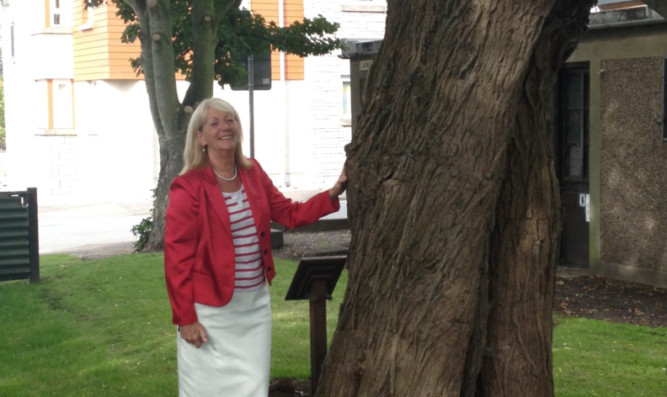An old tree that laid the foundations for a Tayside town is to be safeguarded for future generations.
Carnoustie’s “dibble tree” took root in 1797 when an itinerant shipwright and salmon fisher left his dibble or planting stick in the ground.
Thomas Lowson, then known as Tammas Lousen, put his wandering days behind him and decided to settle down as the crack willow Salix fragilis began to grow.
He built a house, and as others came to join him, the tree growing in their midst became a symbol of their newly-founded town.
It was recently noticed that the tree may be at risk but has never been protected by any conservation order, and Angus councillors will be asked to approve one this week.
The order was suggested by the county’s provost, Helen Oswald, who said she was surprised no such protection existed.
She said: “It’s such an integral part of how Carnoustie came to be.
“It would be a tremendous shame to see it damaged or taken down.
“We’re a very young burgh with not much built heritage, so we have to protect everything that reminds us of where we came from.
“This is the very hub of the town.”
Lowson used his job as a salmon fisher to gain exemption from the press gang during the Napoleonic wars and spent years as sea fencible or militiaman, keeping look-out over the bay.
Willows are not expected to live for more than 150 years but the “dibble” survived a 19th Century lightning strike that split the trunk almost to the roots.
The cricket-bat willow stands at around 30ft tall and stretches nearly 20ft across.
Even the town’s name derives from the Scottish phrase craw’s noustie or crow’s nest, after the birds which nest in the tree once a year.
The great-great-grandson of Carnoustie’s founder, David Lowson, has lived in the town all his life and is still very active into his nineties.
He said: “Before old Tammas settled here, there was only a barren wilderness lying empty beside the sea.
“Nothing grew, and no one planted anything.
“No one would have wasted good grain on such poor ground.
“But he found that, by using seaweed as fertiliser, he could grow potatoes.
“Shortly after that, he left his dibble in the ground.’’
